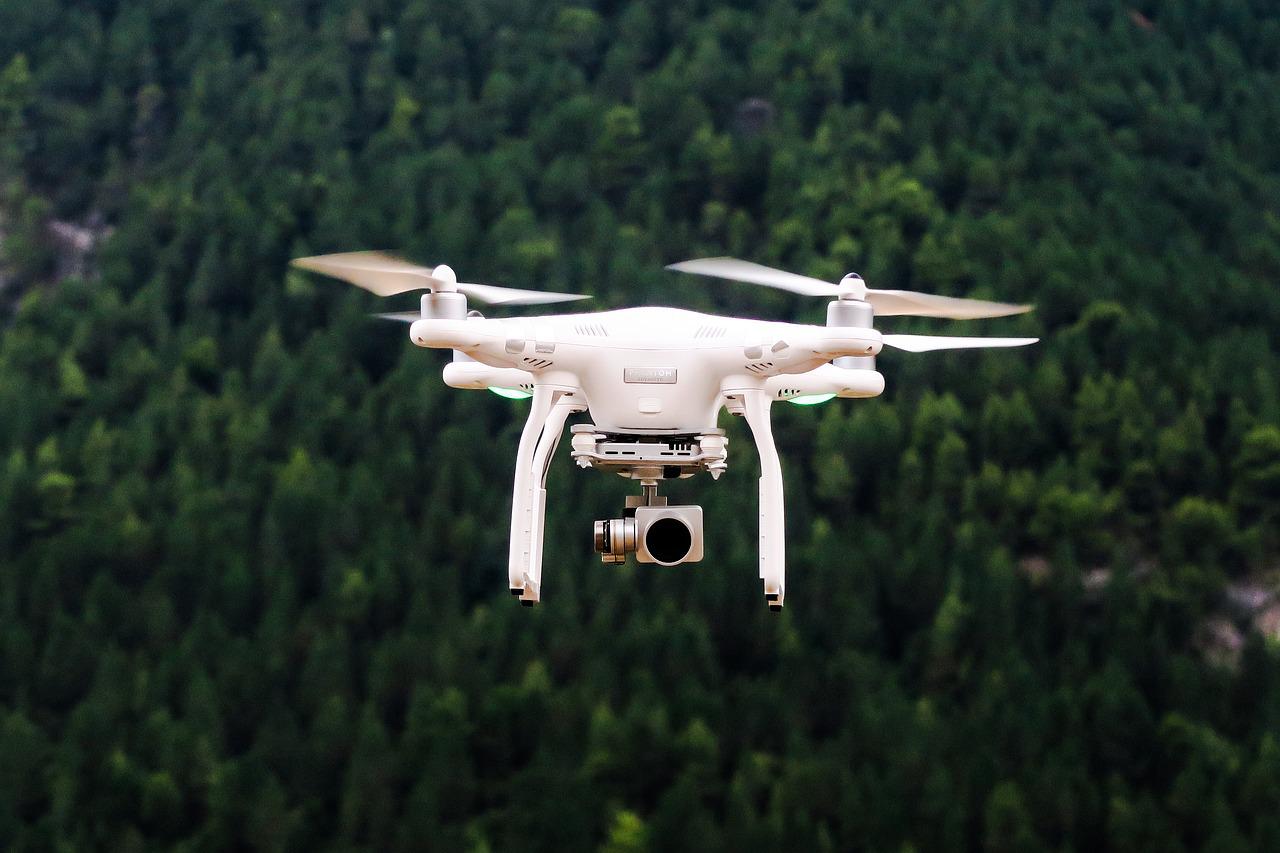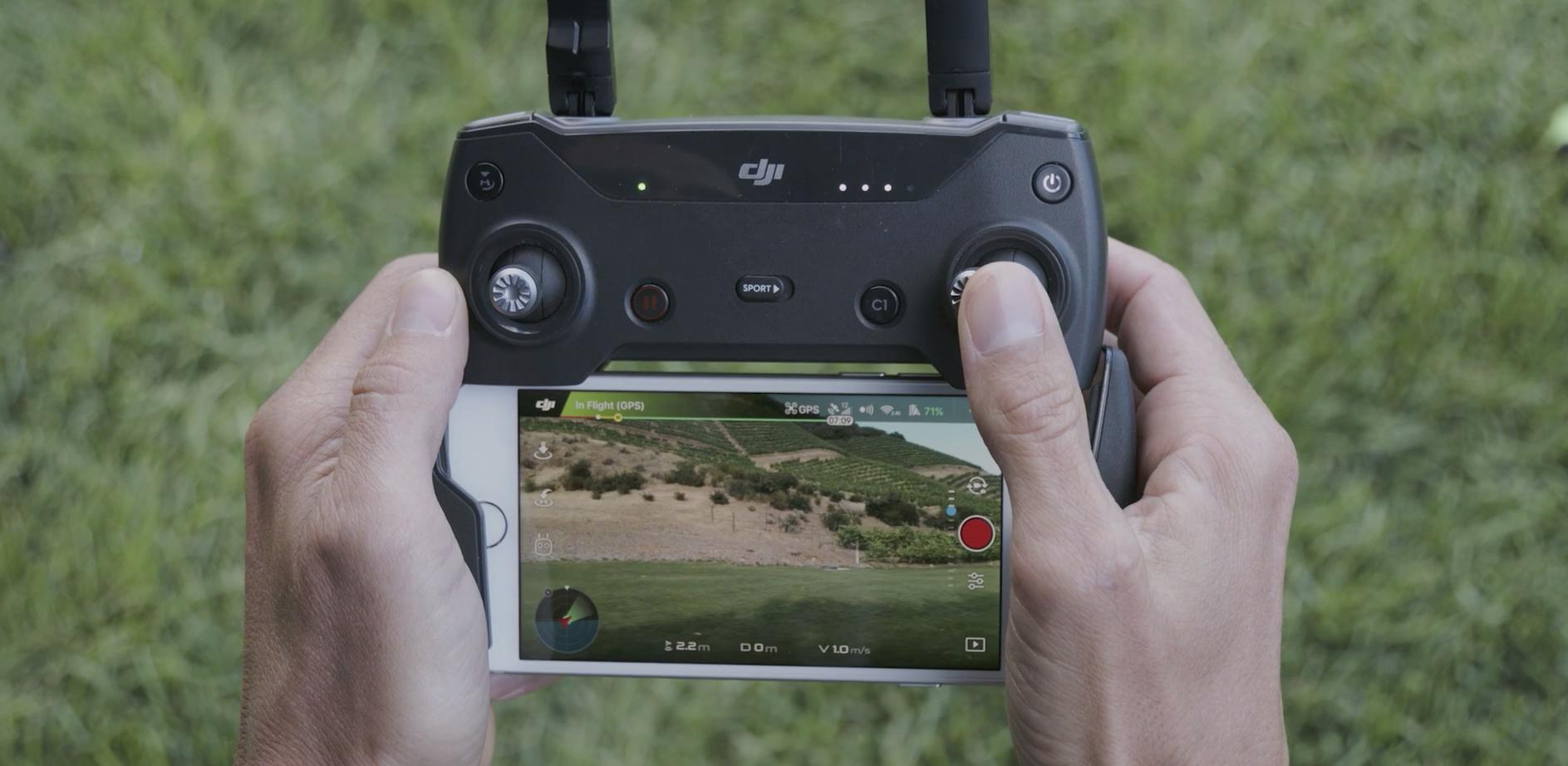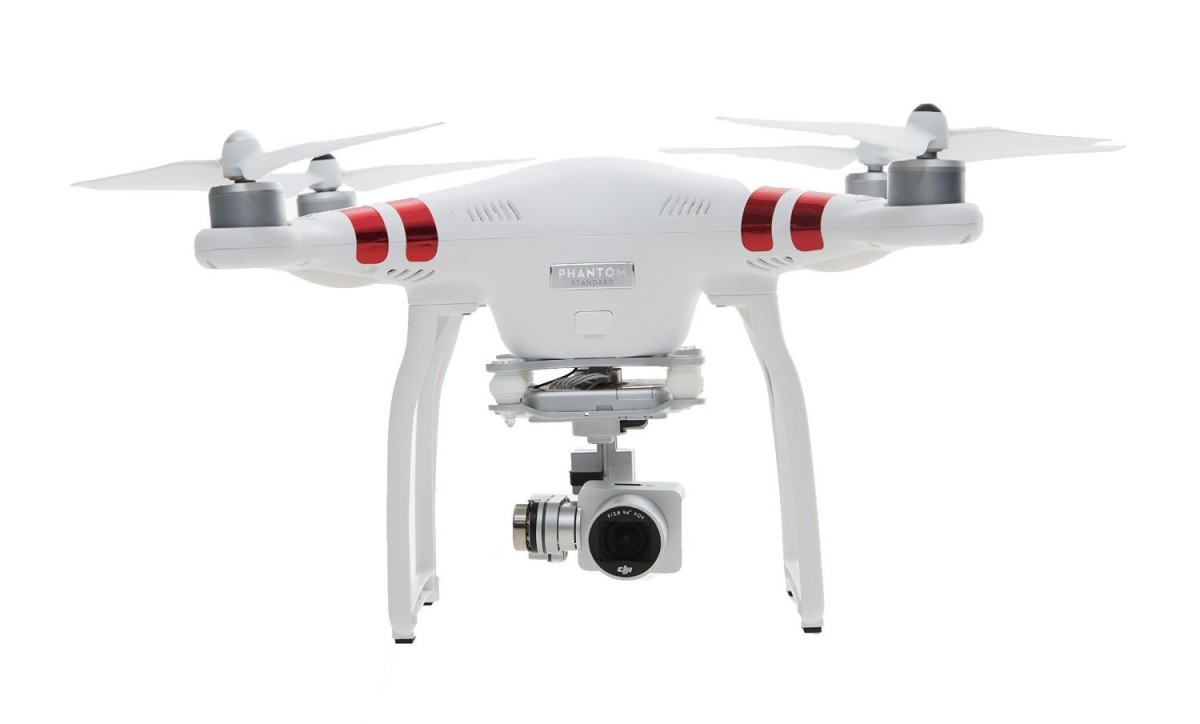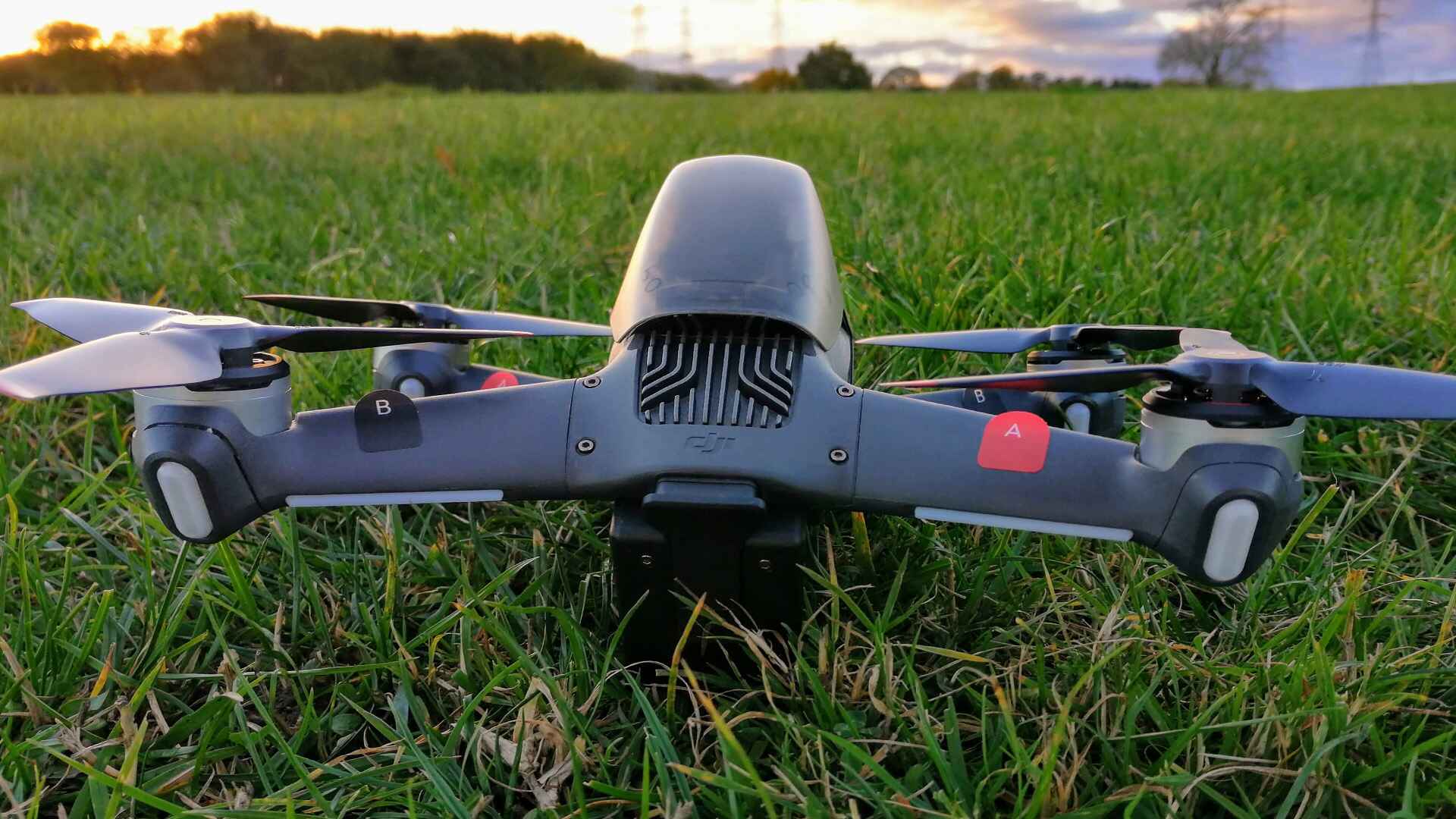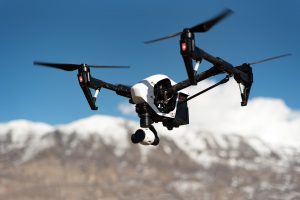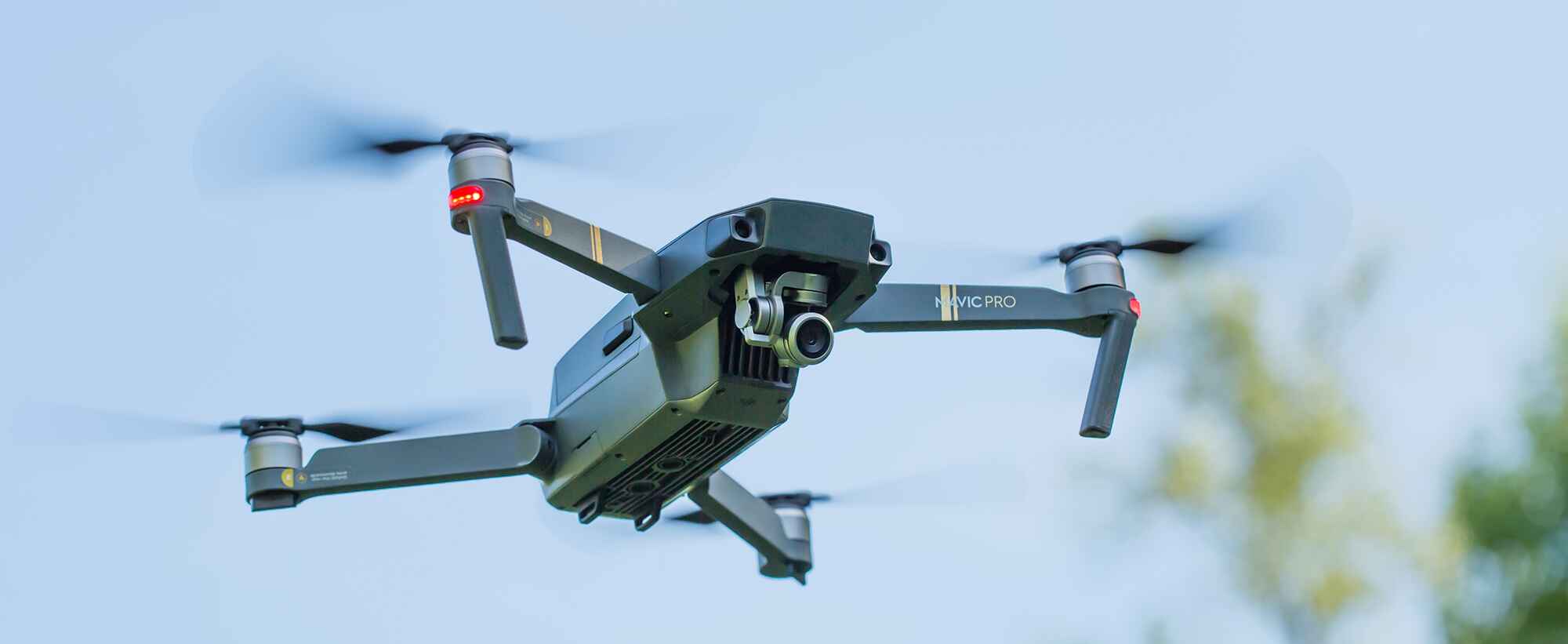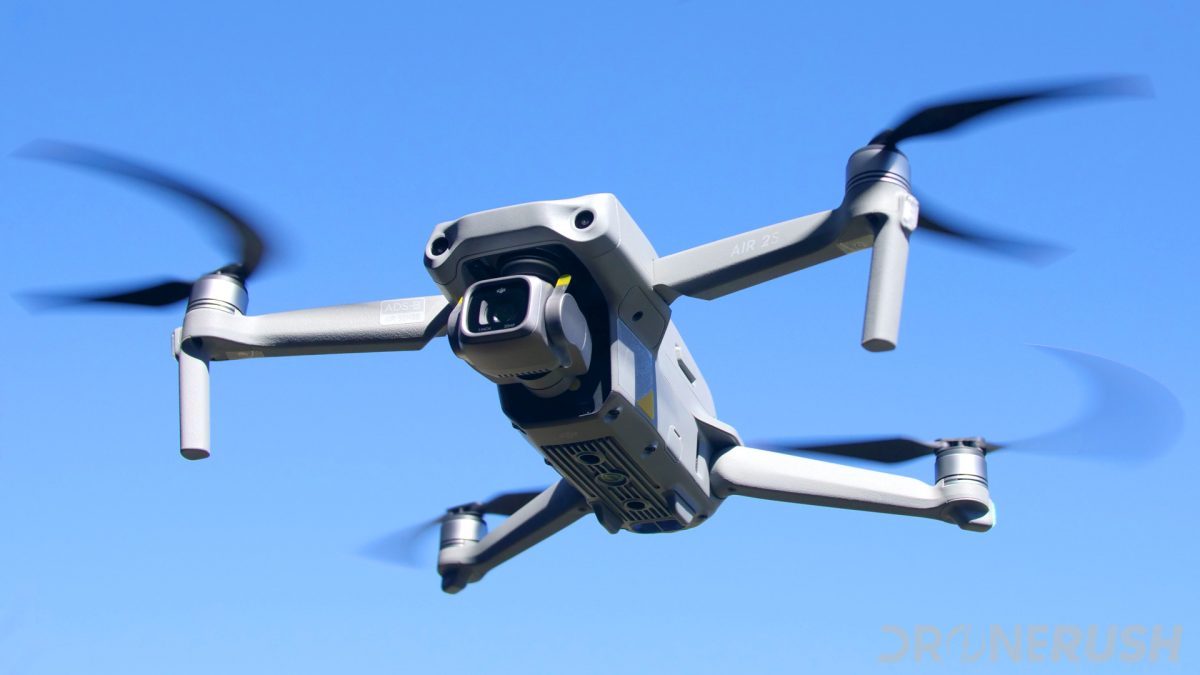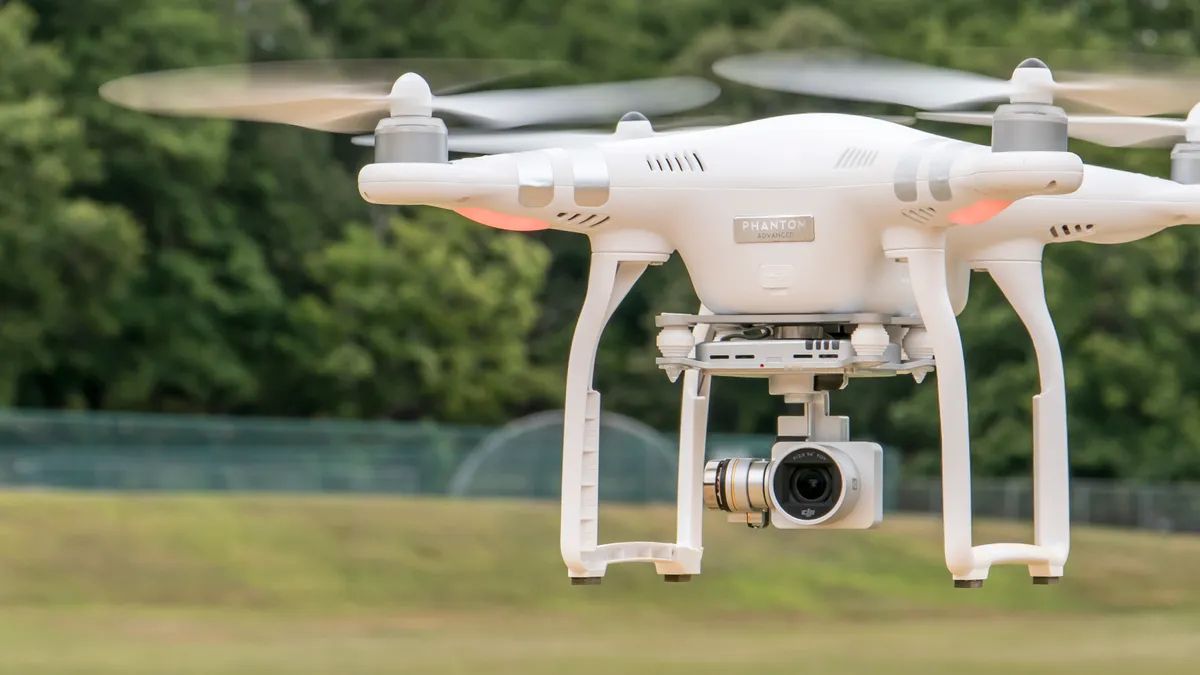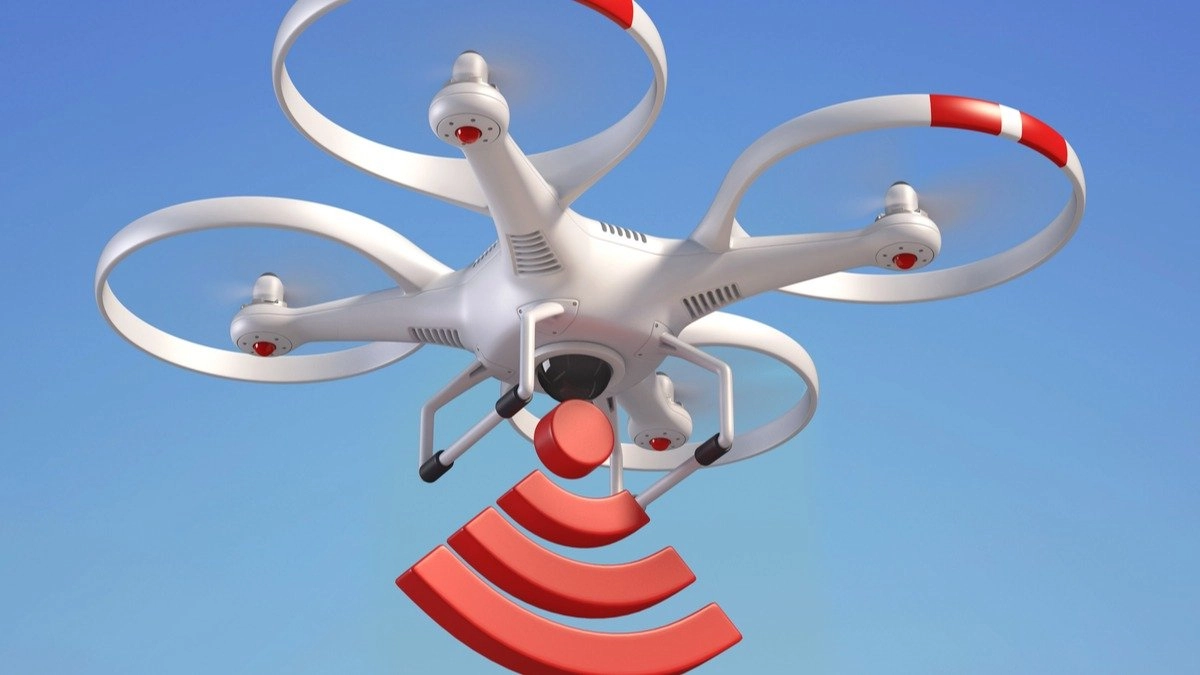Introduction
Welcome to the world of drones, where we can soar through the skies and explore new horizons like never before. Drones have become increasingly popular in recent years, revolutionizing various industries such as photography, videography, delivery services, and even recreational activities. But have you ever wondered how far these high-tech devices can actually go?
In this article, we will delve into the fascinating world of drone range and explore the factors that affect their capabilities. Whether you are a drone enthusiast, a professional pilot, or simply curious about the technology, join us as we uncover the secrets behind how far drones can fly.
Understanding the range of drones is crucial, as it determines the operational limits and possibilities of these aerial vehicles. From small hobbyist drones to advanced commercial models, each comes with its own specific range. This range is the maximum distance that a drone can travel from its takeoff point while still maintaining a stable and reliable connection with its operator.
It is important to note that drone range can vary significantly depending on numerous factors. These factors can include the drone’s design, battery capacity, signal transmission technology, environmental conditions, and any flight restrictions or legal regulations in place.
Throughout this article, we will explore these factors in more detail, examine the various types of drones and their range capabilities, discover the record-breaking distances covered by drones, and offer tips and techniques to enhance drone range. Finally, we will discuss the legal considerations that drone operators must bear in mind when it comes to flying within a certain range.
So, if you are ready to embark on an aerial journey and uncover the possibilities of drone range, let us take off and explore the vast skies together!
Understanding the Range of Drones
When it comes to understanding the range of drones, it’s important to consider the various factors that influence their capabilities. The range of a drone refers to the maximum distance it can travel from its takeoff point while maintaining a stable connection with its operator or control system.
One of the primary factors that affect drone range is the design and technology of the drone itself. Different drones are built with varying levels of power and efficiency, which directly impacts how far they can fly. Some drones are designed for short-range flights, ideal for recreational or indoor use, while others are built for long-range operations, making them suitable for professional aerial photography or surveying.
Battery capacity is another crucial factor that determines drone range. The type and quality of batteries used in drones, as well as their overall capacity, will directly impact how long the drone can stay in the air and how far it can travel. Drones with higher-quality batteries and larger capacities can generally fly for longer periods and cover greater distances.
Signal transmission technology is also vital when it comes to drone range. Drones use various methods to communicate with their operators, such as Wi-Fi, radio frequency, or dedicated remote control systems. The quality and strength of the signal transmission can greatly influence the range of the drone. A weak or unstable signal can limit the distance a drone can travel, while a strong and reliable signal can extend its range.
Furthermore, environmental conditions play a significant role in drone range. Factors such as wind speed, temperature, and altitude can affect how far a drone can fly. Strong winds may hinder a drone’s ability to move forward or maintain stability, while extreme temperatures can impact battery efficiency. It’s important for drone operators to consider the prevailing weather conditions before attempting long-range flights.
Lastly, flight regulations and restrictions imposed by aviation authorities also impact drone range. In many countries, there are specific rules and regulations governing drone flights, including maximum altitude limits and no-fly zones near airports or sensitive areas. These restrictions may limit the range and areas in which a drone can be flown legally.
By considering these various factors, drone enthusiasts and professionals can better understand the range capabilities of different drones and make informed decisions about when and where to fly them. As technology continues to advance, we can expect to see even greater improvements in drone range, opening up new possibilities and expanding the horizons of aerial exploration.
Factors Affecting Drone Range
Several factors come into play when determining the range of a drone. Understanding these factors is essential for drone operators and enthusiasts to maximize their flight capabilities and explore the skies to their fullest extent.
Battery life is arguably the most critical factor affecting drone range. The capacity and quality of the drone’s battery directly impact flight time and distance. Drones with larger battery capacities can fly for a longer duration and cover greater distances. It is important for operators to choose drones with batteries that offer optimal power efficiency to maximize flight range.
Signal interference is another notable factor that affects drone range. Drones rely on strong and consistent signals for communication between the operator and the aircraft. Interference from obstacles such as buildings, trees, or electromagnetic interference from other devices can disrupt the signal and limit the drone’s range. Operators should ensure they have a clear line of sight and avoid areas with high interferences to maximize the range of their drones.
Environmental conditions also play a significant role in drone range. Factors such as wind speed, temperature, and humidity can affect a drone’s flight performance and range. Strong winds can exert resistance on the drone, reducing its range and stability. Extreme temperatures can affect battery performance, reducing flight time and distance. Operators should assess the weather conditions before flying and adjust their flight plans accordingly to optimize range and performance.
The weight and design of the drone are additional factors that impact its range. Heavier drones require more power to stay in the air, which can reduce flight time and range. Sleek and aerodynamic designs, on the other hand, can minimize drag and improve efficiency, allowing for extended range capabilities. Operators should consider the weight and design of their drones to achieve the desired range for their specific needs.
Lastly, flight altitude plays a crucial role in drone range. Higher altitudes allow for greater range as there is less air resistance to contend with. However, many countries have regulations in place that restrict drones from flying above a certain altitude. Operators should be aware of these limitations and ensure they comply with the established rules to avoid any legal repercussions.
By taking these factors into account, drone operators can optimize the range of their aircraft and push the boundaries of aerial exploration. It is important to remember that the range of drones can vary significantly depending on the specific model and its features. Understanding the factors that impact range will empower operators to make informed decisions and extract the full potential of their drones.
Types of Drones and Their Capabilities
Drones come in various types, each catering to different needs and offering specific capabilities. Understanding the different drone categories can help enthusiasts and professionals choose the right model for their desired range and functionality.
1. Hobbyist Drones: These drones are designed for recreational purposes and typically have a limited range. They are lightweight, easy to control, and often used for aerial photography or simply for fun. Hobbyist drones usually have a range of around 100 to 500 meters, making them ideal for short-distance flights in open areas.
2. Consumer Drones: Consumer drones are a step up from hobbyist drones, offering improved stability, camera features, and longer flight ranges. They are popular among photography enthusiasts and individuals looking to capture stunning aerial footage. Consumer drones typically have a range of up to 2 kilometers, allowing for more expansive views and possibilities.
3. Professional Drones: Professional drones are built to withstand more demanding conditions and offer advanced features suitable for commercial applications. These drones often come with higher-quality cameras, longer battery life, and enhanced range capabilities. Depending on the model, professional drones can have ranges between 5 to 10 kilometers, making them ideal for aerial surveying, inspections, and filmmaking.
4. Racing Drones: Racing drones are specifically designed for high-speed aerial competitions. These drones are lightweight, nimble, and built to maneuver through obstacle-filled courses. Racing drones typically have shorter ranges, often between 200 to 500 meters, as they are primarily focused on speed rather than extended range capabilities.
5. Industrial Drones: Industrial drones are large and robust, equipped with advanced sensors and payload capacity. They are used for various industrial purposes such as land surveying, mapping, agriculture, and even delivery services. Industrial drones can have impressive range capabilities, with some models capable of flying up to 20 kilometers or more.
It is important to note that these ranges are approximate and can vary depending on factors such as battery capacity, signal interference, and flight conditions. Additionally, advancements in drone technology are continuously pushing the boundaries, resulting in drones with increased ranges and capabilities.
When choosing a drone, it is crucial to consider your specific needs and the range required for your intended uses. Whether you are an aerial photography enthusiast or a professional in search of a powerful surveying tool, understanding the capabilities and limitations of different drone types will help you make an informed decision and undertake your aerial ventures with confidence.
Longest Distance Covered by a Drone
The world of drones has witnessed remarkable feats as technology continues to advance. One of the most fascinating aspects is the record-breaking distances that drones have covered, pushing the boundaries of what was once thought possible.
As of the time of writing, the longest distance covered by a drone stands at an impressive 22.5 kilometers (14 miles). This record was set by a custom-built drone in China. The successful flight demonstrated the capabilities of long-range drones and showcased the potential for applications such as search and rescue missions, aerial mapping, and more.
However, it’s worth noting that these high-altitude, long-range flights are generally carried out in controlled environments by experienced pilots and under specific regulatory permissions. The average consumer or hobbyist drone may not possess the same long-range capabilities due to limitations in battery life, signal strength, and flight restrictions.
In recent years, drone manufacturers have been actively working to improve range capabilities for commercial and consumer-grade drones. Companies are investing in research and development to enhance battery technology, optimize signal transmission, and improve aerodynamics to achieve greater distances.
It’s also important to mention that some drones, known as fixed-wing drones, have the potential to cover longer distances compared to their multirotor counterparts. Fixed-wing drones are similar to traditional aircraft and rely on forward motion for lift, allowing them to achieve extended flight times and cover larger areas. These types of drones are often used for aerial surveying, mapping, and other long-range applications.
While the longest distance covered by a drone is an impressive feat, it’s essential to consider the practical limitations and regulations that come into play when operating drones. Local regulations may restrict the range and altitude of drones for safety and privacy reasons. Operators must always adhere to these regulations and ensure responsible and legal drone operations.
As technology continues to evolve, it is likely that we will see even greater distances covered by drones in the future. With ongoing advancements in battery technology, signal transmission, and innovation in drone design, the possibilities for long-range flights are expanding rapidly.
Ultimately, the longest distance covered by a drone serves as a testament to human innovation and reflects the immense potential of these aerial vehicles in various industries. As we continue to push the boundaries of drone capabilities, the sky truly is no longer the limit.
Enhancing Drone Range: Tips and Techniques
For drone enthusiasts and professionals looking to maximize the range of their drones, there are several tips and techniques that can help enhance their flight capabilities. By following these guidelines, operators can push the boundaries of their drones’ range and explore new horizons in the sky.
1. Upgrade Batteries: Investing in higher-capacity batteries can significantly improve the range of a drone. Look for batteries with larger capacities and longer flight times to extend the duration and distance of your flights. Additionally, ensure that the batteries are fully charged and properly maintained for optimal performance.
2. Optimize Signal Transmission: Strong and reliable signal transmission is crucial for maximizing drone range. To enhance signal strength, consider using a dedicated remote control system or upgrade to an external antenna for improved connectivity. Ensure that there are no obstacles or interference sources between the drone and the controller.
3. Reduce Weight: Every extra gram of weight adds to the drone’s power consumption. Minimizing the weight of the drone by removing unnecessary accessories or using lightweight materials can help conserve battery power and extend the flight range.
4. Fly in Suitable Weather Conditions: Choose calm weather conditions to optimize drone range. High winds can significantly impact flight stability and reduce range. It is advisable to fly on clear days with mild wind speeds to maximize distance and ensure safer flights.
5. Maintain Line of Sight: To ensure a strong and stable connection, maintain a clear line of sight between the drone and the controller. Avoid flying behind obstacles or in areas with signal interference, as this can hinder the drone’s performance and limit its range.
6. Follow Local Regulations: Familiarize yourself with local regulations and flight restrictions in your area. Flying within legal limits ensures the safety of your operations and prevents any interference from authorities that can potentially restrict your range.
7. Firmware Updates and Calibration: Regularly update the firmware of both the drone and the controller to ensure you have the latest features and performance enhancements. Additionally, calibrate your drone according to the manufacturer’s instructions to maintain accurate flight control and optimize range.
8. Consider External Range Extenders: External range extenders, such as signal boosters or range-boosting antennas, can help improve signal strength and extend drone range. These devices can enhance the range of both the drone’s video transmission and control signal.
It is important to note that while these tips can help enhance drone range, there are still limitations based on the specific model and its capabilities. Operators should always prioritize safety and adhere to local regulations when extending their drone’s range.
By implementing these tips and techniques, drone enthusiasts can enjoy extended flight durations and explore new locations with confidence. Always remember to fly responsibly, be aware of your surroundings, and respect privacy regulations to ensure a positive and safe drone flying experience.
Legal Considerations for Drone Flight Range
When it comes to flying drones, there are important legal considerations to keep in mind, especially when it comes to drone flight range. Regulations and restrictions are in place to ensure the safety of both the drone operator and the public. Understanding and adhering to these laws is crucial to avoid legal consequences and promote responsible drone usage.
1. Know the Local Regulations: Familiarize yourself with the local regulations and laws governing drone flights in your area. Different countries and regions may have specific rules regarding altitude limits, flight range, and no-fly zones. Understand the restrictions and obtain any necessary permits or licenses required for flying drones within a certain range.
2. Respect Privacy: Ensure you respect the privacy of others while operating your drone. Avoid flying over private property without permission and be mindful of capturing images or videos that may infringe upon someone’s privacy rights. Understanding and following privacy laws and guidelines will help maintain a positive relationship between drone operators and the general public.
3. Maintain Visual Line of Sight: In many jurisdictions, it is a legal requirement to maintain a visual line of sight with the drone at all times during flight. This means you must be able to see the drone with your unaided eyes and not rely solely on the drone’s camera feed. Flying beyond the visual line of sight can not only violate regulations but also pose safety risks.
4. Avoid Restricted Areas: Certain areas such as airports, military bases, and government facilities are restricted airspace and off-limits for drone flights. Familiarize yourself with these no-fly zones and respect the regulations to prevent potential conflicts with aviation authorities and ensure public safety.
5. Fly During Daylight Hours: Many countries have regulations that restrict drone flights to daylight hours. It is generally safer and easier to navigate and operate a drone during daylight, ensuring better visibility and minimizing the risk of accidents.
6. Be Mindful of Air Traffic: Always prioritize safety and avoid interfering with manned aircraft. Yield to other aircraft in the area and maintain a safe distance to prevent potential collisions. Adhering to airspace regulations and being aware of any temporary flight restrictions will contribute to a safer and more responsible drone flight experience.
7. Keep Emergency Services Informed: If you plan to fly your drone near emergency services such as hospitals, police stations, or fire stations, it is advisable to notify them in advance. This courtesy gesture ensures that emergency operations are not disrupted and helps maintain a positive image of drone operations with these entities.
8. Stay Updated with Regulations: As regulations can evolve and change over time, it is important to stay updated with any amendments or new rules introduced by aviation authorities. Regularly check for updates from relevant authorities to ensure compliance with current legal requirements.
By being aware of and following these legal considerations, drone operators can enjoy their flights within a safe and responsible framework. Adhering to regulations not only protects against potential legal consequences but also fosters a positive public perception of drones and their use.
Conclusion
In conclusion, the range of drones is a crucial aspect to consider when operating these aerial vehicles. Understanding the factors that affect drone range, such as battery life, signal transmission, environmental conditions, and flight regulations, allows drone enthusiasts and professionals to make informed decisions for their specific needs.
Various types of drones cater to different requirements and offer specific capabilities. From hobbyist drones for recreational use to professional drones for commercial applications, each category provides different flight ranges and functionalities. It is essential to choose the right drone type that aligns with your intended purpose and desired range.
Additionally, there are several tips and techniques to enhance drone range. Upgrading batteries, optimizing signal transmission, reducing weight, flying in suitable weather conditions, and following local regulations are some of the ways to maximize the range of your drone. By implementing these practices, operators can unlock new possibilities and expand their aerial exploration.
However, it’s crucial to emphasize the importance of responsible drone operation and adherence to legal considerations. Understanding and following local regulations, respecting privacy, maintaining visual line of sight, avoiding restricted areas, and being mindful of air traffic are key aspects of responsible drone flying. By doing so, operators can enhance safety, promote positive public perception, and prevent legal repercussions.
As technology continues to advance, we can expect to see further improvements in drone range capabilities. Continued innovations in battery technology, signal transmission, and drone design will likely result in even greater distances covered by drones in the future.
In conclusion, the range of drones is not only a measure of their capabilities but also a testament to human ingenuity and exploration. By understanding and respecting the factors that influence drone range, operators can unlock the full potential of these aerial devices and continue pushing the boundaries of aerial photography, surveying, delivery services, and more.







